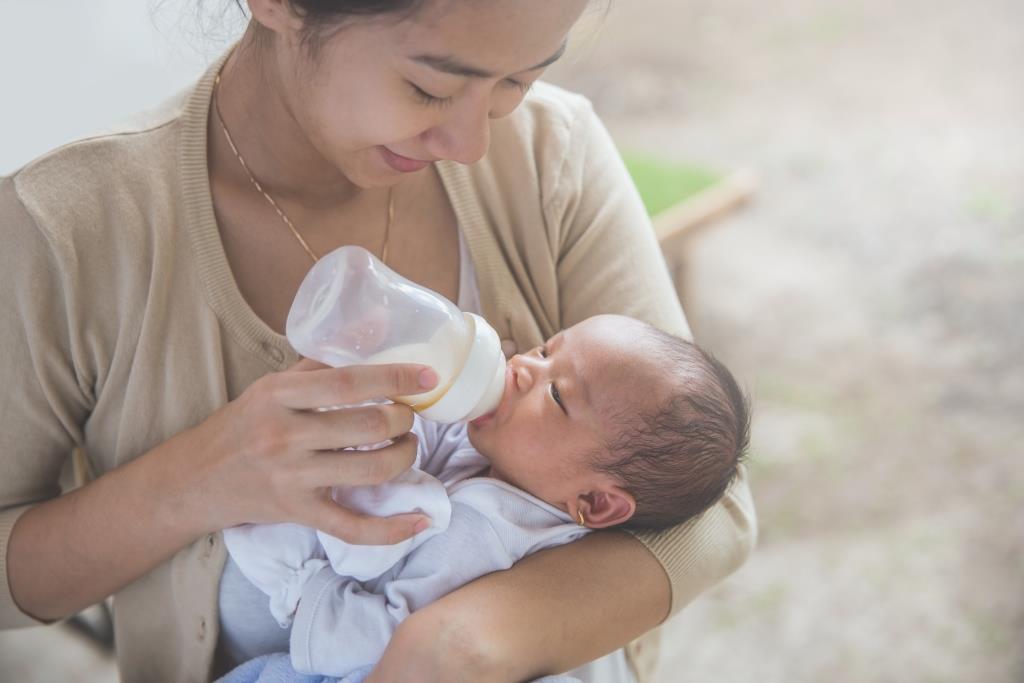 🖨️ Print post
🖨️ Print post
Breastmilk from a well-nourished mother is the best option for early nourishment. But when this isn’t possible, a homemade baby formula is the next best alternative. On this podcast, Sally Fallon Morell, president of the Weston A. Price Foundation, explains in detail how and why she and her colleague, Dr.Mary Enig, developed an alternative to commercial formula. She discusses its composition, its success rate with babies, why it is preferable to commercial formulas (with their rancid oils and denatured ingredients) and alternative recipes for those babies that show signs of allergies or sensitivities.
Notes:
Highlights from the conversation include:
- The problem with commercial baby formula is in the ingredients
- Why butterfat is often considered too “valuable” to put into commercial baby formula
- The drive for profits among commercial baby formula makers
- How highly nutritious food is the key to proper development of baby in the first year
- The importance of arachidonic acid from breast milk or animal fats
- The alternative option to commercial baby formula: raw milk-based homemade formula
- How mother’s milk is raw, full-fat milk
- By and large, milk from all mammals is extremely similar to human breast milk
- The campaign in the 1950s and 60s to give infants formula instead of breastmilk
- The problems that arose for the generations brought up on this formula
- Now all the doctors and pediatricians say “breast is best”
- Why homemade formula may be a help for those who struggle with breastfeeding, or to produce enough milk for their babies
- This homemade baby formula is based on raw milk
- The safety of raw milk
- Sally’s story of trouble breastfeeding her second child
- The positive testimonials about the homemade formula from Nourishing Traditions
- How the homemade formula may be richer in nutrients than some mother’s breast milk
- The mother’s diet is a huge factor in the health of her breast milk for her growing baby
- Formula replacements for farm animals is formulated for the animals to thrive
- How the WIC (Women, Infants and Children) program has impacted formula ingredients
- The problem with soy formula
- Soy-based formulas replaced more expensive meat-based formulas in the 1970s
- Why soy formula is still on the market despite initial opposition
- What if you just gave babies raw milk instead of any formula
- The risks of commercial formula vs. homemade raw milk formula
- A meat-based formula for babies with allergies or sensitivities to dairy
- The affordability of homemade formula
Resources:
Formula ingredients for homemade raw milk-based formula:
(step by step recipe on page 602 of “Nourishing Traditions”)
*Makes 36 ounces
2 cups of whole fat raw milk, from Pasture-fed cows
¼ cup of home made liquid whey
4 tablespoons of Lactose
¼ teaspoon Bifidobacterium infantis
2 tablespoons of good quality cream (can be pasteurized but NOT ultra pasteurized, or UHT)
½ teaspoon of high vitamin cod liver oil (or 1 teaspoon of regular cod liver oil)
¼ teaspoon of high vitamin butter oil (optional)
1 teaspoon of unrefined sunflower oil
1 teaspoon of extra virgin olive oil
2 teaspoons of coconut oil
2 teaspoons of Frontier brand nutritional yeast flakes
2 teaspoons of gelatin
1 7/8 cups of filtered water
¼ teaspoon of acerola powder
Sources:
Note: you may take out the yeast and the gelatin if baby demonstrates sensitivities
Nourishing Traditions by Sally Fallon Morell and Dr. Mary Enig: https://newtrendspublishing.com/nourishing-traditions/
The Nourishing Traditions book of Baby and Childcare by Sally Fallon and Dr. Thomas Cowan: https://newtrendspublishing.com/the-nourishing-traditions-book-of-baby-child-care/
Radiant life kit with all the ingredients for the formula: https://www.radiantlifecatalog.com/product/nourishing-traditions-kit-homemade-baby-formula/baby-child-care
Nourishing Our Children: https://nourishingourchildren.org/
Weston A. Price website with topics and sources on children’s health: https://www.westonaprice.org/childrens-health/
“The Parents’ Guide to Better Nutrition for Tots to Teens (And Others!)” by Emory W. Thurston



I love these podcasts, they’re so helpful. Something I’d like to know is what we can do for the animals we love. Lots of us have had occasion to have to raise baby kittens or puppies or other animals. Wild animals should really be taken to a wildlife shelter. But I know we can do better for our pets than what is in the pet stores. I’ve always had to tweak the recipe or they get constipated anyway. Now I wonder what the fats do to the brain. Last time I had a baby kitten I gave him a tiny bit of probiotics in the formula, but I couldn’t find out what species they have in their guts so I gave him B. infantis. Does anyone know how to tweak this formula for other animals?
how can I get access to Sally’s podcasts !!??
What do I have to do ?
Love and blessings from Nyla Blair,
LONGtime member of WAPF
Curious regarding giving babies sunflower oil. With all the acknowledgement of how detrimental seed oils are, is there a better recipe option?
Avocado oil
Hey there! As an IBCLC and Nutritionist, I have heard plenty of people talk about issues with cows milk due to cows milk protein allergy. It seems as though cows milk
protein (my educated guess is it is more so related to conventional dairy) causes more issues in babies and is a fairly common occurrence. I remember watching the video on the website where they went through how to make homemade formula but didn’t recommend using goats milk, but I believe that is outdated. Might I suggest an update with goats milk formula recipe, seeing as many people claim that goats milk is gentler on their stomach and many people have goats on their homesteads. Thank you!
I do not know what ingredient is: “good quality cream (can be pasteurized)”, is it heavy whipping cream?
What about just plain raw goat milk for a 5 month old ? Nothing else added ?